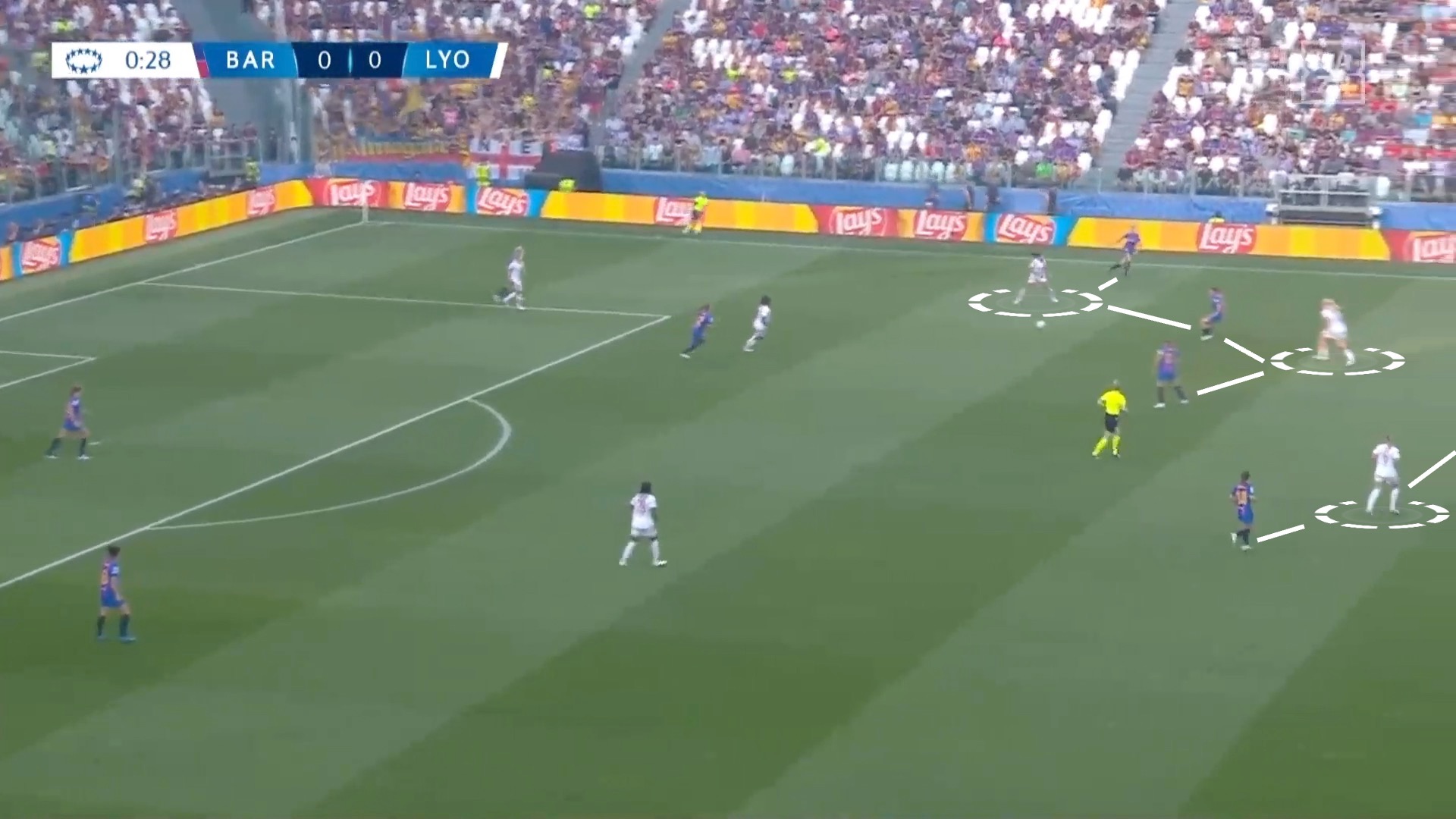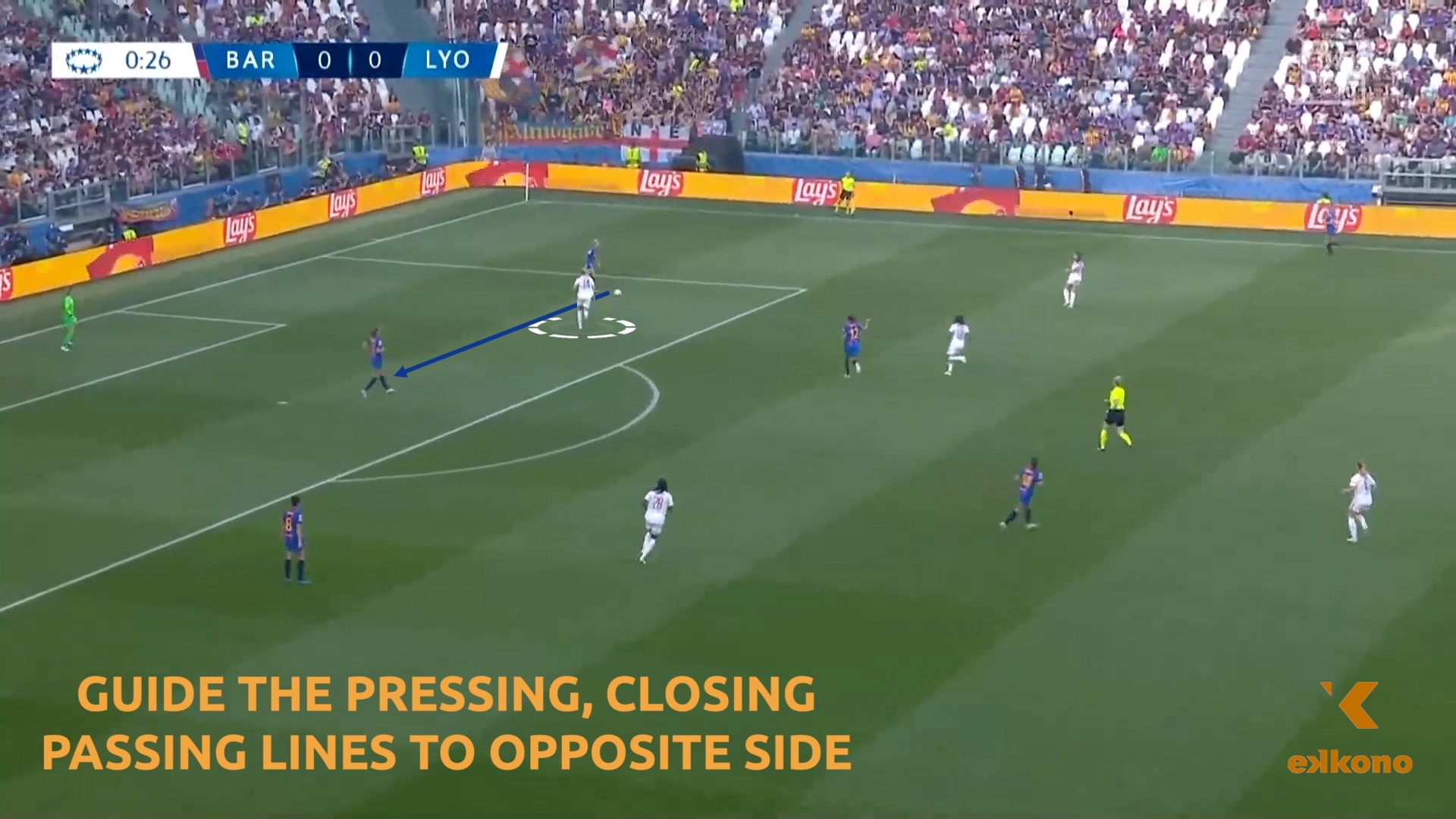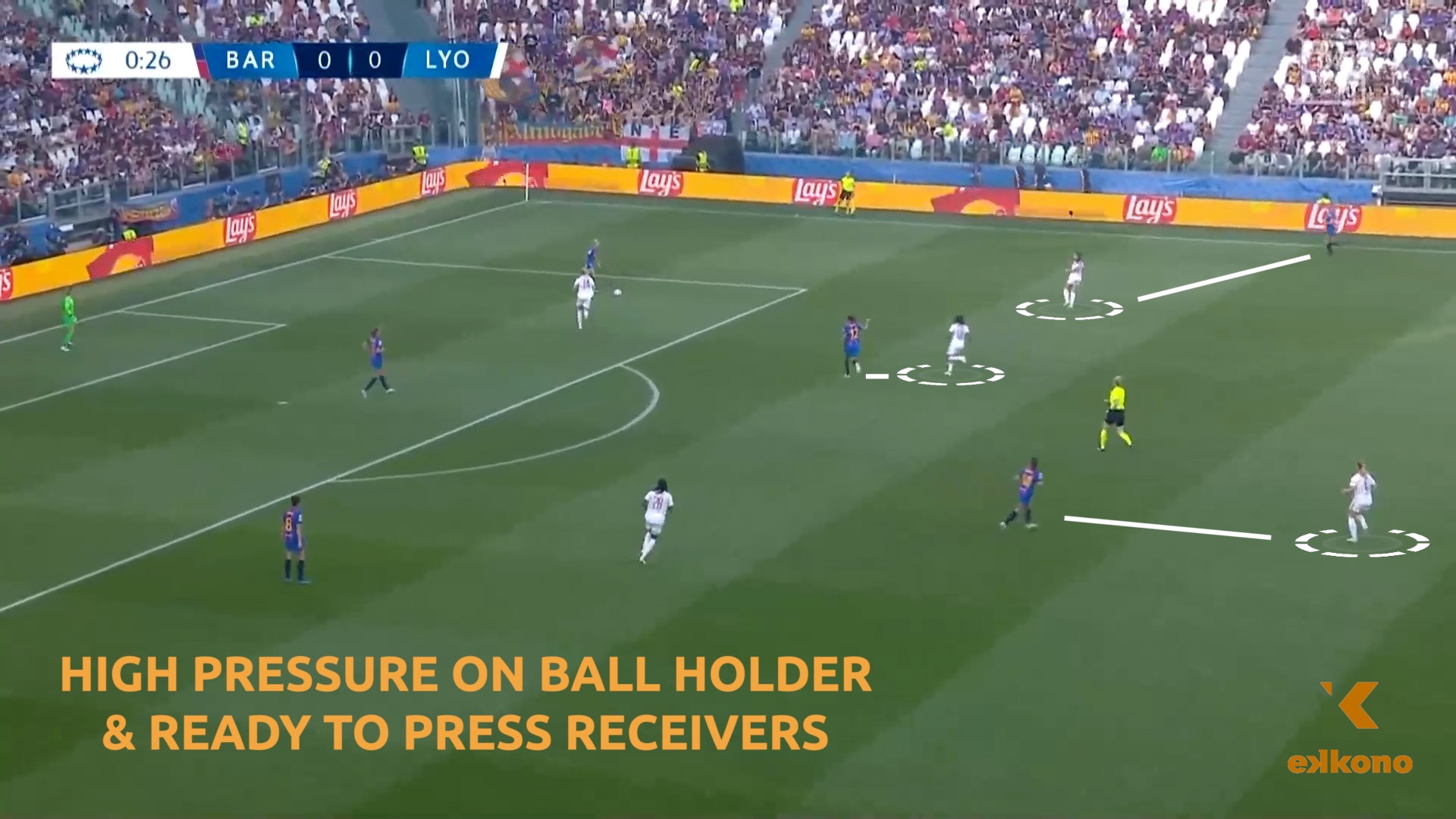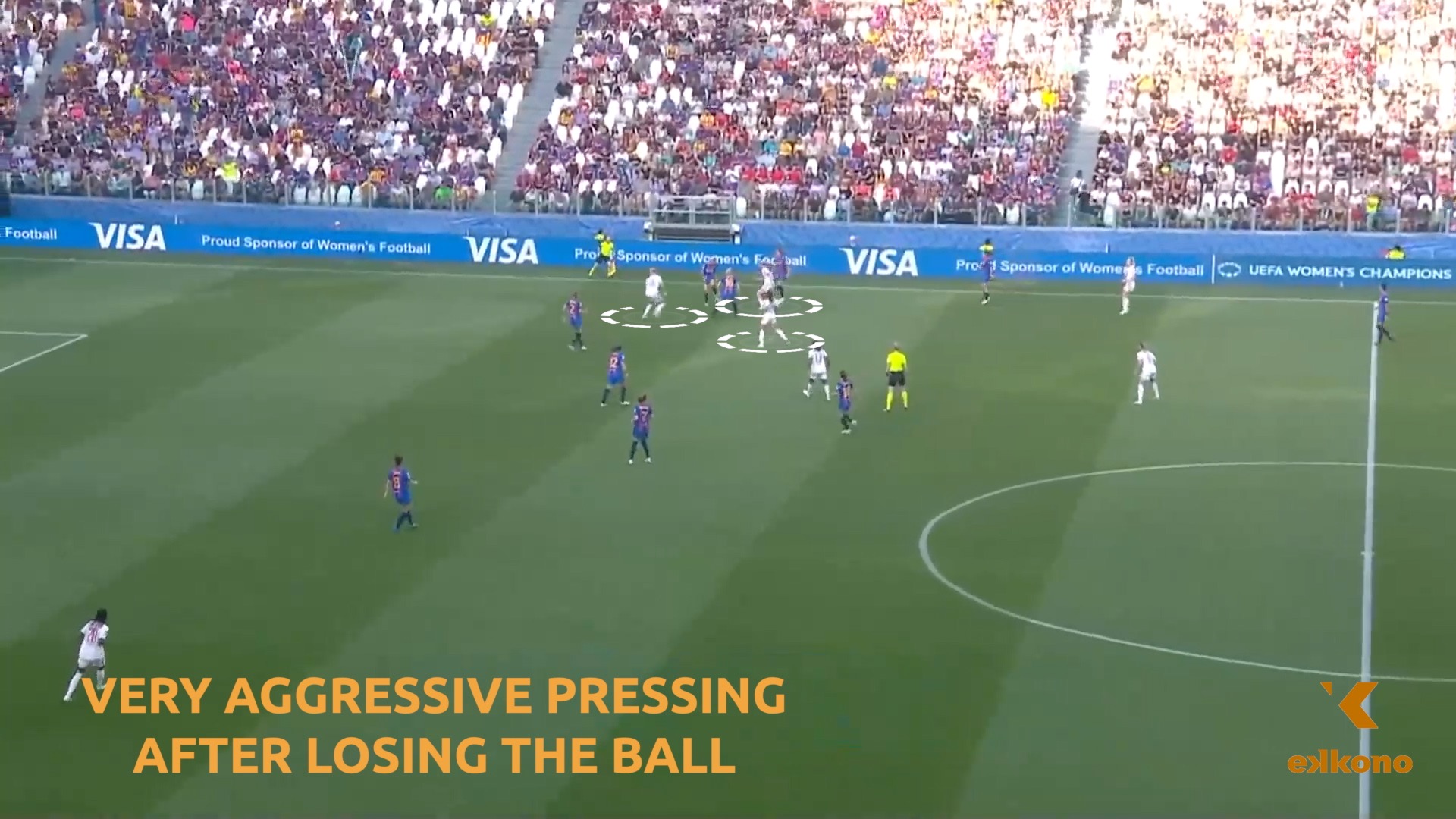
Olympique Lyonnais recently won their 8th UEFA Women’s Champions League trophy against FC Barcelona (3-1) in the final played at the Juventus Stadium (Torino, Italy). The French champions based their game plan in a very well organized pressing that did not allow Barcelona have a comfortable build-up during the whole match.
In this analysis, we will try to illustrate how Lyon structured their defensive structure.
The first principle of her pressing was how Ada Hegerberg is usually the trigger to start the pressure. She does a fantastic job to guide the opponent’s attack towards one of the sides, blocking any possible passing line between center backs. In this case, we can see how she is starting the pressure towards the ball holder, Mapi León, and blocking the pass towards Irene Paredes.
This allows Olympique Lyonnais to focus their pressing in a smaller portion of the pitch, allowing the wingers and midfielders to be close to the players who can receive the ball. This way, OL managed to create many problems to Barça, one of the best team in the build-up phase, during the UWCL final.

1. Guide pressure

2. Mark passing option
The second characteristic of Lyon’s high pressing is the way their players are placed in the pitch, ready to press. Unlike other coaches we saw, such as Marcelo Bielsa who use individual marking when pressing high, Sonia Bompastor’s side prefer to position players in between opponents.
This way, thanks to adapting the distance to the opponent player and getting closer when there is a high possibility they are going to receive the ball, Lyon manages to build a very efficient spider web that allows them to stop the opponent’s progress and recover the ball in many occasions. In the image below, we can see how three players from Les Lyonnaises are able to defend up to five players of Les Culers.

3. In between players
Finally, Olympique Lyonnais is also a very aggressive team when they lose the ball. From the start of the Champions League final, they applied a very intense counter-press with players moving forward and surrounding the ball holder. This combined with additional players blocking the nearest passing lines, helped Lyon recover the ball fast in the opponent’s side of the field.
As we can see below, three players are surrounding the ball holder, who has no time to think and look for options to play the ball. In this case, Lyon did not manage to recover the ball, but they did hinder Barcelona’s attack, which had to be restarted from the center backs. In that situation, were ready to apply high pressure again, as we saw earlier.

4. Counter press
Olympique Lyonnais have won the UEFA Women’s Champions League 8 times, and 6 out of the last 7 editions not only because of their outstanding offensive power, commanded by Ada Hegerberg, as we analyzed previously but also because of their defensive capabilities, as we’ve seen in this analysis. The French champions are able to press in a very coordinated and intense way, which creates problems even for teams who master the build-up, such as FC Barcelona.

